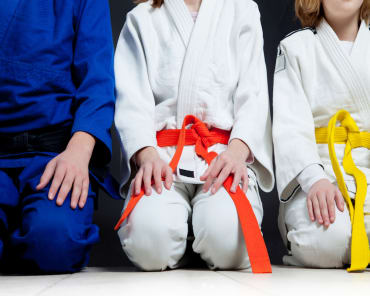In the realm of Brazilian Jiu-Jitsu (BJJ), earning the coveted brown belt is a testament to years of dedication, resilience, and an unwavering commitment to the art. As practitioners advance through the ranks, the journey to a brown belt becomes a transformative experience, blending technical proficiency with a deeper understanding of the art. Let's explore the key elements that define the path to a BJJ brown belt.
1. Technical Mastery and Depth of Knowledge
Reaching the level of a BJJ brown belt requires a profound understanding of the art's technical aspects. Practitioners must showcase mastery in fundamental techniques, transitions, escapes, and submissions. The brown belt journey involves not only refining existing skills but also delving into a more intricate and nuanced exploration of BJJ's vast repertoire.
2. Consistency and Time Investment
The journey to a brown belt is not a sprint; it's a marathon that demands consistency and a significant investment of time. Unlike lower belts, the time spent at each level increases, reflecting the depth of knowledge and skill required. Brown belt candidates are individuals who have devoted years to honing their craft, attending regular classes, and consistently pushing the boundaries of their abilities.
3. Effective Teaching and Communication Skills
As practitioners progress to the brown belt level, an emphasis is placed on effective teaching and communication skills. Brown belts are expected to guide and mentor lower-ranked students, providing clear instruction and constructive feedback. The ability to convey complex techniques, share insights, and inspire others on their journey is a hallmark of a BJJ brown belt.
4. Adaptability in Sparring Situations
A brown belt must demonstrate a high level of adaptability during sparring. This involves facing opponents with various styles, sizes, and skill levels. Brown belts are expected to navigate through different scenarios, showcasing their ability to strategize, problem-solve, and implement techniques seamlessly. Adaptability in sparring is a key indicator of a practitioner's readiness for the brown belt.
5. Mental Toughness and Resilience
The brown belt journey involves overcoming mental challenges, setbacks, and plateaus. Practitioners must exhibit mental toughness and resilience, pushing through moments of frustration and self-doubt. The ability to stay focused, maintain composure during intense training, and persevere through difficulties is a crucial aspect of the mental fortitude required for a BJJ brown belt.
6. Advanced Understanding of Positions and Transitions
Brown belts possess an advanced understanding of BJJ positions and transitions. They can seamlessly flow from one position to another, anticipate their opponent's movements, and strategically navigate through various phases of a match. The proficiency in transitions reflects not only technical expertise but also a deep comprehension of the intricacies of ground grappling.
7. Contributions to the BJJ Community
A brown belt is not only a skilled practitioner but also someone who contributes positively to the BJJ community. This may involve assisting with classes, organizing events, or sharing knowledge with fellow practitioners. Brown belts are considered ambassadors of the art, actively contributing to the growth and camaraderie within the BJJ community.
In conclusion, the journey to a BJJ brown belt is a multifaceted endeavor that encompasses technical mastery, time investment, effective teaching skills, adaptability, mental toughness, advanced positional understanding, and positive contributions to the BJJ community. As practitioners embark on this transformative journey, they emerge not only as skilled martial artists but also as leaders and mentors within the dynamic world of Brazilian Jiu-Jitsu.






